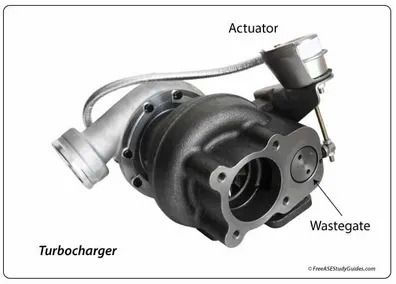Turbocharger Wastegate Actuator Adjustment

Hello everyone!
If you're vehicle is equipped with a turbocharger and you're experiencing laggier boost response, less power, and less boost then a wastegate adjustment may be required. Now you should verity you do not have any boost leaks before commencing this adjustrent.
If you don't know how a wastegate actuator works it's a valve that uses engine boost pressure to regulate itself. Inside the wastegate is a spring which is rated for a certain PSi, which is its cracking pressure. For an example if a wastegate is equipped with a 7 PSi spring then the wastegate will open once it receives 7 PSi. Wastegate pressure is the minimum boost the turbo will make while max pressure can be controlled via a boost controller or via engine management. The opening of this wastegate diverts the exhaust gas flow to bypass the turbine to control turbo speed and regulate compressor output. Over time this spring will begin to get weaker which in turn can cause the wastegate flap to prematurely open or possibly not even seat.
A wastegate adjustment is a simple process and the tools you'll need with simply be a flat head screwdriver, a wrench set, and some pliers. You should do this when the engine is cooled down to avoid injuring yourself.
Begin by removing the c-clip off the flap and pulling the actuator arm off. Then attempt to reinstall the actuator arm onto the wastegate flap to see how much adjustment it requires. To have a properly set wastegate you should be applying a some force to reinstall it, if it goes on nice and easy then your wastegate is loose. To make these adjustments hold the actuator arm and back off the jam nut. Make small changes and retest on the wastegate flap to see if your adjustment is good or not. Once you're adjusted tighten the jam nut and reinstall the c-clip squeezing them on with some pliers. This is a generic how-to so it's important to take this information and theory and apply it to your specific vehicle and engine. That being said some vehicles may need other items and potentially the whole turbocharger removed in order to complete this adjustment.
Thank you for reading my how-to, if you have any questions feel free to ask or if theres a how-to you'd like to see then I can see about making one!
